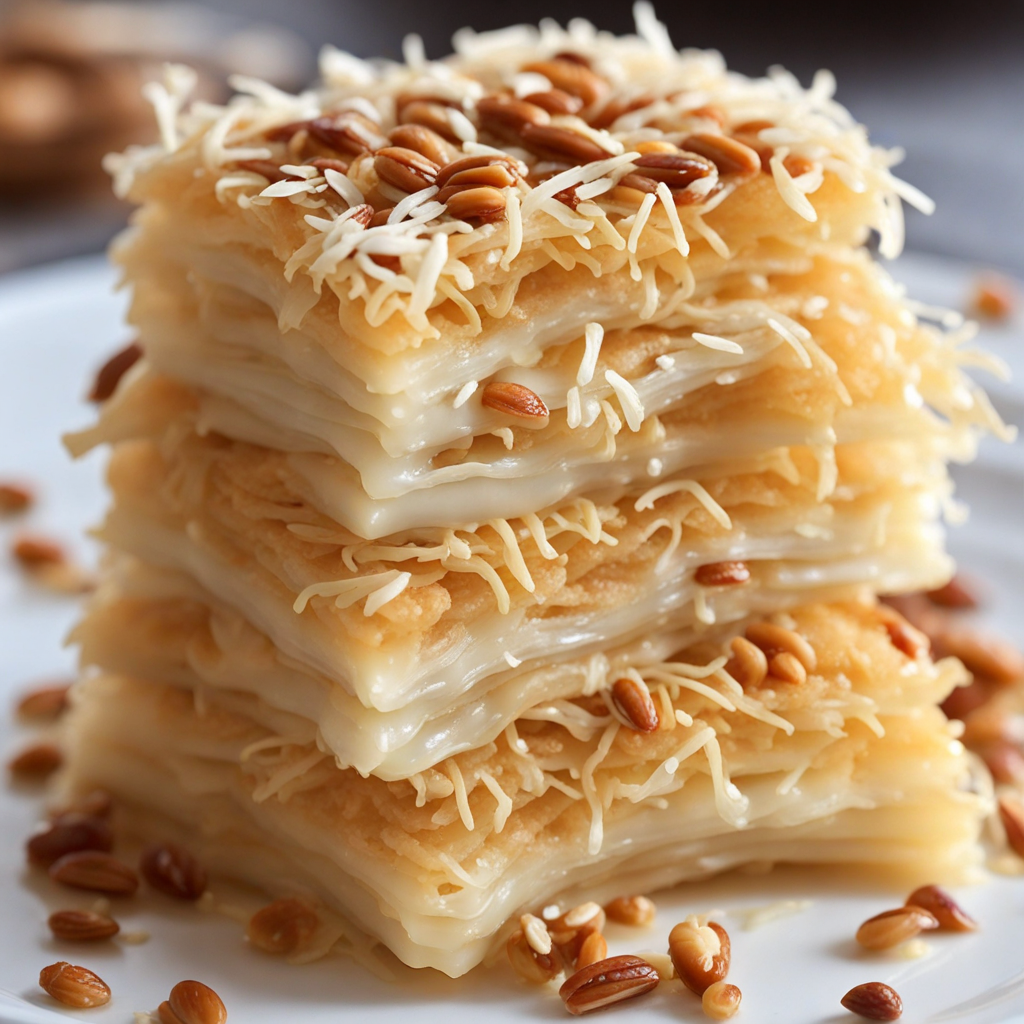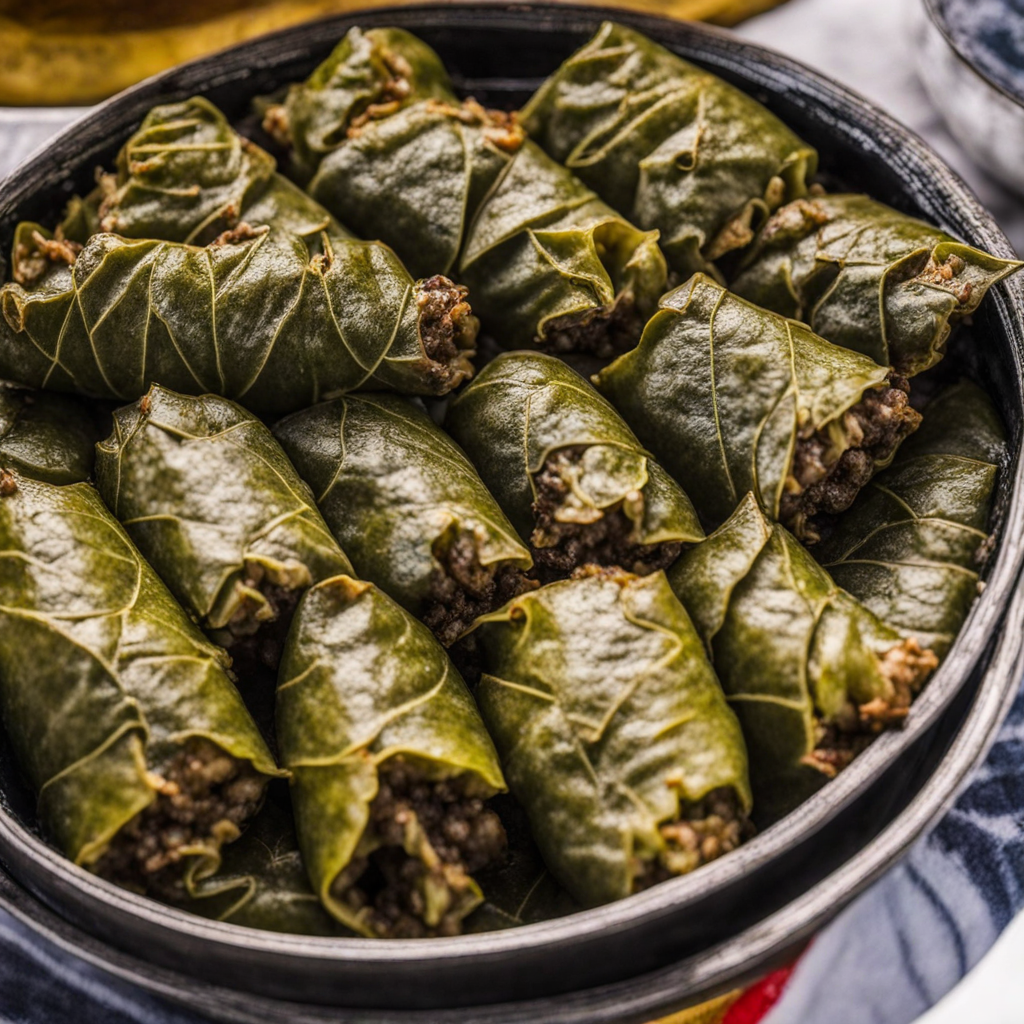Šampita
Šampita is a delightful dessert that hails from Bosnia and Herzegovina, capturing the essence of traditional Balkan sweets with its unique texture and flavor. At its core, Šampita is made from a light and airy meringue, which is crafted by whipping egg whites into soft peaks and gradually adding sugar. This creates a fluffy, cloud-like consistency that melts in your mouth. The meringue is often layered on top of a simple biscuit or sponge cake base, providing a satisfying contrast in texture that enhances the overall experience of this treat. The allure of Šampita lies not only in its texture but also in its subtle sweetness and flavor profile. The meringue is sometimes flavored with a hint of lemon or vanilla, which adds a refreshing touch that balances the sweetness. The dessert is then typically topped with a light dusting of cocoa powder or grated chocolate, which further enriches its visual appeal and adds a hint of bitterness to offset the sugary elements. Each bite offers a delightful combination of soft, sweet meringue and a slightly denser cake base, making it a perfect accompaniment to coffee or tea. Šampita is often enjoyed during festive occasions and gatherings, serving as a symbol of hospitality and warmth in Bosnian culture. Its elegant presentation and delicate flavors make it a standout dessert that can impress guests at any celebration. Whether you're indulging in it at a local café or trying your hand at making it at home, Šampita promises a unique taste experience that reflects the rich culinary heritage of Bosnia and Herzegovina.
How It Became This Dish
A Sweet Journey Through Time: The History of Šampita in Bosnia and Herzegovina Šampita, a delectable Bosnian dessert, is a testament to the rich culinary heritage of the region, marrying tradition with a symphony of flavors and textures. This sweet treat, composed of fluffy meringue atop a creamy custard base, has become a beloved staple in Bosnian households and bakeries alike. Its history is deeply intertwined with the cultural tapestry of Bosnia and Herzegovina, reflecting the influences of various civilizations that have traversed the land. Origins: A Confluence of Cultures The origins of Šampita can be traced back to the Ottoman Empire's rule over the Balkans, which lasted for several centuries, beginning in the 15th century. This period was marked by the exchange of culinary practices between the local Slavic populations and the Ottomans. The Ottomans, with their sophisticated patisserie traditions, introduced a variety of sweets and desserts that blended local ingredients with exotic flavors. One of the key components of Šampita is meringue, which is made from whipped egg whites and sugar. While meringue itself has roots in ancient Europe, it was popularized in the Ottoman kitchens, where it was often paired with nuts, fruits, and creams. The name "Šampita" is believed to be derived from the French word "champing," referring to the light and airy texture of the meringue, which has a cloud-like quality. Cultural Significance: More Than Just a Dessert In Bosnia and Herzegovina, Šampita transcends its role as a mere dessert; it is a symbol of hospitality and celebration. This treat is often prepared for special occasions, such as weddings, religious holidays, and family gatherings. The act of making Šampita is often a communal one, bringing families and friends together in the kitchen, reinforcing bonds and traditions. The preparation of Šampita is an art form that requires skill and patience. The custard base must be made with precision, ensuring a creamy texture that contrasts beautifully with the airy meringue. Traditionally, the meringue is baked to achieve a delicate crust while maintaining a soft interior. Each layer contributes to the overall experience of the dessert, symbolizing the harmony that is often sought in Bosnian culture—a fusion of flavors, history, and community. Development Over Time: A Culinary Evolution As Bosnia and Herzegovina faced significant political and social changes throughout the 20th century, so too did its culinary landscape. The post-World War II era saw the rise of a socialist state, which brought about a shift in food production and availability. Traditional recipes like Šampita were often adapted to suit the resources available, leading to variations in the dessert. For example, some bakers began to incorporate local flavors, such as walnuts or hazelnuts, into the custard or meringue mixture, creating a unique twist on the classic recipe. The 1990s were a tumultuous time for Bosnia and Herzegovina, marked by conflict and hardship. However, during this challenging period, food remained a source of comfort and continuity. Families would often gather to prepare traditional dishes, including Šampita, as a way to preserve their cultural identity and foster a sense of normalcy amidst chaos. The act of baking became a form of resistance, a way to hold onto heritage and traditions in the face of adversity. In the 21st century, as Bosnia and Herzegovina emerged from the shadows of war, there has been a renewed interest in traditional foods, including Šampita. Chefs and home bakers alike have sought to revive and modernize classic recipes, experimenting with new flavors and presentations. The dessert has found its place in contemporary cafes and restaurants, where it is often served with innovative twists, such as fruit coulis or chocolate drizzles. Šampita Today: A Culinary Ambassador Today, Šampita stands as a culinary ambassador for Bosnia and Herzegovina, celebrated not only within the country but also among the diaspora. Its presence in cultural festivals, food fairs, and international events serves as a reminder of the rich history and traditions of Bosnian cuisine. Many Bosnian immigrants have carried the tradition of making Šampita to their new homes, sharing it with friends and family and introducing the dessert to a broader audience. The dessert has also gained popularity on social media platforms, where food enthusiasts share their own interpretations and recipes. This digital age has allowed for a cross-cultural exchange of culinary ideas, enabling Šampita to reach new audiences and inspire future generations of bakers. Conclusion: A Sweet Legacy The history of Šampita is a reflection of Bosnia and Herzegovina's complex cultural heritage—a blend of influences and traditions that have shaped its identity over centuries. From its Ottoman origins to its modern-day adaptations, Šampita remains a cherished dessert that evokes memories of family gatherings, celebrations, and the warmth of Bosnian hospitality. As culinary traditions continue to evolve, the legacy of Šampita endures, reminding us of the power of food to connect people across time and space. It is more than just a dish; it is a story of resilience, community, and the enduring spirit of a nation that has faced challenges yet remains proud of its rich cultural tapestry. Whether enjoyed in a cozy family kitchen or a bustling café, Šampita embodies the essence of Bosnia and Herzegovina—a sweet journey worth savoring.
You may like
Discover local flavors from Bosnia And Herzegovina







